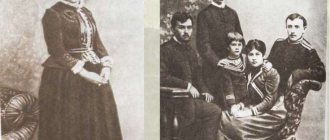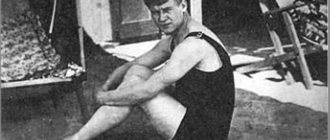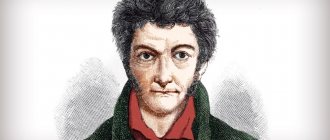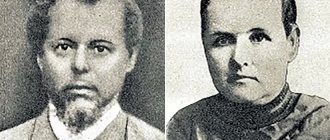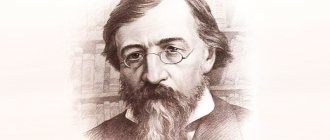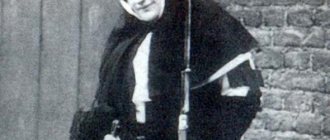- Encyclopedia
- People
- Beethoven
In 1770, in the small German city of Bonn, Ludwig van Beethoven was born, a musician whose works in the future would become a real asset to classical music.
The boy grew up in a family where music was always heard. His parents closely followed the development of his musical abilities and understood how talented their son was. Therefore, Ludwig’s father, Johann, did everything to ensure that he did not stop practicing the violin and harpsichord, forcing him to play melodies on different instruments for days on end.
Family friend, composer Christian Nefe observed from the side the boy's joyless everyday life. He sympathized with him because of his father's ruthless attitude, since the exhausting classes often ended in scandal for the mentor. Nefe tried to find an approach so that the child would have a desire to study music.
The first concert took place in Cologne when the boy was only six years old. At the age of twelve, the director of the court chapel became interested in Ludwig. Beethoven began to study languages with interest, compose music, and turn the pages of the works of W. Shakespeare and F. Schiller.
In 1787, when Ludwig's mother died, he had to earn money on his own. To do this, he began performing in orchestras. This was the first successful experience on the path to music, which he received thanks to his teachers - A. Salieri, J. Haydn. His friends respected him for his patience and kindness, and his mentors for his talent and focus, despite his sloppy appearance. He amazed listeners with his virtuoso piano playing.
Among the world-famous works of L. Beethoven, “Moonlight Sonata”, “Christ on Masichnaya Hill” and others have gained great popularity. Beethoven's love affairs ended in tears.
However, subsequent years did not bring him complete pleasure from creative work. He is hampered by a severe illness, which forces him to settle in the city of Heiligenstandt out of sight. But the work doesn't stop. Despite his deafness, the Third Symphony comes out of his pen. After it comes the creative upsurge of the musician, who added entire series of musical works to his list of compositions.
1827 was the year of the death of the great composer. He was buried in the Varinga cemetery.
Beginning of biography: childhood
The future composer was born in 1770. His homeland is Germany, the city of Bonn. The boy received the musical gift by inheritance. Ludwig's grandfather and father served as court singers. Mom had nothing to do with music, but was very caring and tender towards her three sons.
Beethoven's father taught his heir to play the piano and violin. He wanted to make him an artist and take him around cities so that he could earn money for his family through concerts. But my father's upbringing was cruel and harsh.
Ludwig's first performance took place at the age of 8. And at 10 he met his first teacher, Christian Nefe.
Training helped Beethoven to write and publish his first compositions at the age of 12.
Youth. First fame
At the age of 17, the young talent went to Vienna to study with the great composer Mozart. And he received approval and praise from him. But the study did not take place. Soon a message came about his mother's illness, and Ludwig had to return home.
Beethoven in his youth.
Mom died, and Beethoven began to take care of his growing brothers. He began giving music lessons, at the same time played in an orchestra and never stopped writing new music. From his youthful works, the song “Marmot” is especially famous. Her words belong to the German poet Goethe.
The young man went to Vienna again; he really wanted to study further. Mozart had already died by that time, so Beethoven began studying with other famous composers.
During this period, his gift as a pianist was revealed. The audience fell in love with the emotional performance of the young performer. Beethoven is considered the first musician in history who managed to make a living from his performances.
Beethoven's only opera
During his lifetime, Beethoven earned his living only from his music. He also carried out "political orders" for some of the leaders of his time.
Beethoven wrote the opera Fidelio at the request of Baron Peter von Braun. After its premiere in 1805, the opera was heavily criticized, causing Beethoven to rework the score several times. The third version of the opera was a success.
The plot of the opera “Fidelio” is a real incident from the time of the French Revolution: a brave woman, disguised as a man, manages to free her husband from a Jacobin prison.
The flourishing of creativity and the best essays
Beethoven especially loved to write sonatas. This is the name of music played by one or more instruments. The whole world knows the piano “Moonlight Sonata”. The composer created it when he broke up with his girlfriend. Other famous sonatas are the Appassionata (which means “passionate”) and the Pathétique (“excited”).
The author performs his own music.
Beethoven was also a master of symphonies. A symphony is a musical composition for a large orchestra. Only true talent can create such complex music.
The history of the composition of one of the symphonies, the Third, is interesting. At first, the author dedicated it to the French commander Napoleon. But later he became disillusioned with it and gave the symphony the name “Heroic”.
The play “Fur Elise” is also loved by listeners and pianists. It was found in the composer's archives and played in public after his death.
Fighting deafness. Last years and death.
At the age of 26, Ludwig began to lose his hearing. This drove him into despair. Deafness meant that he could no longer be a pianist. But she did not take away the possibility of creativity.
Beethoven passionately began to compose and record the music he imagined and heard in his head.
Ludwig van Beethoven is a famous composer.
He did this for almost 30 years. He wrote not only works for instruments, but also for voice. He also processed songs of different peoples of the world in his own way.
When the composer turned 54, he created his best and last Symphony No. 9 for orchestra and choir. After her performance, the audience stood up and greeted the author with long applause.
Beethoven died at 56 from liver disease. He was escorted to the cemetery by a crowd of 20 thousand people.
Research work “Beethoven. Test of fate" music project (7th grade) on the topic
I.Introduction
Beethoven is glory and pride
of all civilized humanity.
His thoughts and feelings are close and
dear to all peoples of the world.
D. Shostakovich
Sometimes we complain about fate, are dissatisfied with our lot, despite the fact that we have everything for life. Infantility and reluctance to create or change something are characteristic features of our time. But there are examples of people who, not having full opportunities to realize themselves, overcoming and overcoming physical ailments, despite fate, were able to succeed not only as individuals, but also did not stop creating brilliant works of art: artist Boris Kustodiev, writer Alexander Ostrovsky, etc.
For us, one of such striking personal examples was the fate of the great German composer Ludwig van Beethoven.
Thus, the choice of the research topic is not accidental and its relevance is obvious, since personalities such as Beethoven can serve as an example of spiritual and physical feat.
It is known that Beethoven’s life was an endless chain of suffering, but in the midst of suffering he found true happiness in serving people. Listening to the play of eleven-year-old Franz Liszt, he uttered the words that define the purpose of his own life: “There is nothing higher and more beautiful than to give happiness to many people.”[1]
Beethoven's music moves the hearts of listeners to this day, and we understand that it came from the depths of the composer's soul. As J. J. Rousseau said, “only what comes from the soul will enter the heart.” We wanted to penetrate the world of Beethoven's soul through his music.
But since the scope of the school curriculum is limited and there is no opportunity to get acquainted in detail with the work of this courageous man, we tried to independently study his biography, trace the stages of his work and the steps of his ascent to fame. But we also tried to show personal qualities in Beethoven: love of life, suffering, struggle with illness and resistance to fate. This is the novelty of our research.
Purpose of the work: to trace the influence of living conditions on the formation and development of Beethoven as a person and composer.
Based on the goal, the following tasks arise:
- Trace the main stages of the composer’s work.
- Analyze musical works that clearly reflected Beethoven’s personality and views.
- Focus on the personality of the great composer.
Thus, the problem of our work is the inexhaustibility of human capabilities if you serve people.
The object of the study was the works of researchers of the life and work of composers: Romain Rolland, Arnold Alschwang, Hector Berlioz, as well as letters from Beethoven. The subject of the study is the life and work of Beethoven.
The practical significance of this material, in our opinion, is that this work can be used in MHC and music lessons when studying topics related to the work of Ludwig van Beethoven.
II. Main part
2.1. Childhood and youth
Beethoven was born in an era that suited his nature perfectly. This is an era rich in great social events, the main one of which is the revolutionary coup in France. The Great French Revolution and its ideals had a strong impact on the composer - both on his worldview and on his work. The main character of Beethoven's work becomes a hero - a fighter for his ideals. “Our time needs people with a powerful spirit,” said the composer[2]. The revolution gave Beethoven enormous spiritual strength, thanks to which he went through all the trials, “through suffering to joy.”
However, not only social events, but also the composer’s personal life contributed to the fact that heroic themes came to the fore in his work.
Nature endowed Beethoven with the inquisitive, active mind of a philosopher. His interests have always been unusually broad, they extended to politics, literature, religion, philosophy, and natural sciences. But all this was countered by a terrible illness - deafness, which could seemingly close the path to music forever. Beethoven found the strength to go against fate, and the idea of overcoming became the main meaning of his life.
Ludwig’s musical education was carried out by frequently changing, “random” teachers who gave him lessons in playing the organ, harpsichord, flute, and violin. Having discovered his son’s rare musical talent, his father wanted to make him a child prodigy, a “second Mozart” - a source of large and constant income. He was forced to practice at the piano even at night; however, the young musician’s first public performances did not live up to his father’s commercial plans (Appendix No. 1).
Beethoven did not become a child prodigy, but he discovered his talent as a composer quite early.
Early on, little Ludwig became the support of the family, he worked without knowing a rest: he copied notes, composed according to requests. He was gloomy, taciturn, with an expressive gaze.
The first concert was given in Cologne, where an eight-year-old boy, for advertising purposes, was called six. But the performance did not bring the expected income.
After the death of his mother, and later his father, the boy becomes the head of the family. Due to poverty, he was forced to enter the service very early. Therefore, he did not receive a systematic education: he attended school only until he was 11 years old, wrote with errors all his life and never learned the secrets of multiplication. But the cruel blows of fate did not break the strong-willed young man. Thanks to his own perseverance, Beethoven managed to become an educated person: he independently mastered Latin, French and Italian, and constantly read a lot.
In his free moments between rehearsals, concerts and lessons, he composed. Beethoven's first work known to us - variations for piano on the theme of E. Dressler's march - was created by him at the age of twelve. This is a simple, cheerful essay in which childish spontaneity and love for life are discernible.
Over the years of hard work, Beethoven became a prominent figure in the city's musical world. The young musician dreams of recognition from great musicians and of studying with Mozart (Appendix No. 2).
Having overcome all sorts of difficulties, 17-year-old Ludwig comes to Vienna, the center of musical art of that time. He wants to meet Mozart. After listening to the young man’s improvisation, Mozart said: “Pay attention to him; he will someday make the world talk about himself.” But Beethoven failed to become Mozart’s student: due to his mother’s fatal illness, he was forced to urgently return back to Bonn.
As a musician, Beethoven had long ago become a real virtuoso; he stood on the same level as the largest pianists in Europe (Appendix No. 3).
The listeners, holding their breath, reveled in his improvisations on the piano; they moved many to tears: “He calls spirits both from the depths and from the heights.” But Beethoven did not create for money or for recognition: “What nonsense! I never thought of writing for fame or fame. I need to give vent to what has accumulated in my heart - that’s why I write.”
As a composer, he needed to improve his talent, new ideas, feelings, impressions - everything that he could not get in Bonn.
By the age of 22, Ludwig van Beethoven had ended the so-called Bonn stage of the composer’s life. For four years - from 1788 until leaving Bonn in 1792 - Beethoven underwent an excellent practical school of orchestral playing and studied all the popular operas of the time.
2.2. Creativity flourishes
In 1792, as a 22-year-old young man, experienced in creativity and performance, he was able to move to Vienna, forever falling in love with this city of magical music.
Soon the young Beethoven becomes one of the first virtuosos in Vienna, his playing is amazing! Flattering reviews come from all sides; he is considered one of the most promising musicians. The nature of the performance is even called revolutionary; he plays perfect music.
By the mid-1800s, Beethoven was already universally revered as undoubtedly the first composer of his time.
— The rules prohibit such a chord progression...
“And I allow it,” the young freethinker objects.
Music is a fantasy set to notes. What the hell are the rules?! Is it possible to force the imagination of a genius into some kind of framework, to label it, to protect it with stupid prejudices?![3]
The first few years he lived in Vienna became the happiest time of his life for Ludwig. He successfully performed in front of distinguished audiences and attracted the attention of professionals (Appendix No. 4).
Haydn became Beethoven's first teacher in Vienna. He wrote: “Both experts and the ignorant must impartially recognize from these plays that in time Beethoven will take the place of one of the greatest composers in Europe, and I will be proud of the right to call myself his teacher.” Haydn told his young student:
“They will find a lot of beautiful, even surprising, things in your compositions, but some will seem dark and strange, because you yourself are a strange and gloomy person, and the composer’s style is himself”[4].
2.3. In a duel with fate
Suffering souls, noble souls!
Take this man as your companion!
Romain Roland
Traditional opinion portrays Beethoven's life from an exceptionally gloomy side, seeing him as stricken by the most terrible illness for a musician - deafness, and haunted by continuous blows of fate. Meanwhile, checking the facts from his life, you are convinced that in many ways Beethoven was happier than others and was recognized by his contemporaries more than anyone else.
In 1797, signs of an incurable disease appeared - progressive deafness, which led Beethoven to a mental crisis in 1802, which was reflected in the famous document - the “Heiligenstadt Testament”. Saying goodbye to everything he lived on earth, the composer seems to want to forget about music and in his testament turns to Heaven in tears: “Oh, Deity, You see my heart from above, You know it, You know that love lives in it towards people and the desire for good. So let it be done. With joy I rush towards death...” (Appendix No. 5).
In a letter addressed to his youth friend Wegeler, Beethoven wrote: “If I had some other profession, it would be even more bearable; but in my profession it’s terrible. I have often cursed both myself and the creator for my existence... I want, if possible, to go against fate.”
The disease approached Beethoven gradually, over the course of six years, and struck him between the ages of 30 and 32. She struck him in the most sensitive place, in his pride and strength - in his hearing! Complete deafness cut the composer off from everything that was so dear to him: from friends, from society, from love and, worst of all, from art!.. Having become acquainted with the works created in 1800-1803, we saw what was reflected in them everything that Beethoven was experiencing at that time; gloomy depression and protest against illness, outbursts of passion and proud humility, searches for peace and quiet. These are the Third Piano Concerto in C minor, op. 37 (1800), sonata As-dur, op. 26 with funeral march and “Moonlight” Sonata (1801), sonata in d minor with recitative, op. 31 (1802), “Kreutzer” Sonata for (violin and piano (1803) and a number of other works. Beethoven fell in love with the young aristocrat Juliet Guicciardi. But in the eyes of the aristocratic family and society of Juliet Guicciardi, Beethoven was just a plebeian musician, unworthy of the hand of his son noble family, and Juliet herself chose to marry Count Gallenberg.
The musician's tragedy was aggravated by the human tragedy.
Sonata - like a fantasy No. 14 in C sharp minor was written in memory of love for the young Juliet Guicciardi (Appendix No. 6). This musical “revelation” embodies many different human feelings: grief over the loss of love, suffering, dreams, memories, sometimes bright, sometimes dark, doubts and faith in the future.
It is no coincidence that Sonata No. 14 entered the history of music under the name “Moonlight”. The romantic poet Relshtab heard in its first part the musical embodiment of a moonlit night on a Swiss lake. Maybe the poet understood that under the moon a person feels his loneliness more acutely? We think this reveals the very “musical language” of part 1: the main melody sounds in the rhythm of a funeral march, like a taut string it hangs between life and death. The bass sounds heavy, like a mournful tread. And all this against the backdrop of triplets that are associated with the passage of time. ...This is the funeral of love.
The way out of the crisis for Beethoven was creativity: “A little was missing for me to commit suicide,” the composer wrote. - “Only it, art, held me back”[5].
We believe that the creator could not have passed away without saying everything that he had suffered and understood. Not for himself, but for others, he decided to continue living. To serve people with his art, to maintain their courage, to console them in misfortune. Beethoven came to terms with an incurable illness, which could not be more terrible for a musician. At 31, he wrote to a friend the proud words that became his motto: “I want to grab fate by the throat. She won’t be able to completely break me.”
It was from this moment that the composer began to understand his path in a new way, and from this moment a new Beethoven began to be born.
One after another, his most typical, most famous works appear, often imbued with energy, a proud spirit of self-affirmation, and heroic struggle: the violin sonata opus 47, known as the Kreutzerova, piano opuses 53 and 57 (“Aurora” and “Appassionata” - the names are not given author), opera “Fidelio”, oratorio “Christ on the Mount of Olives”, three quartets, piano (Fourth), Violin and Triple (for piano, violin and cello) concerts, “Coriolanus” overture, 32 variations for piano in C minor, mass C major, etc. Despite his terrible illness, Beethoven continues to compose music (Appendix No. 7).
In 1804, the F minor sonata “Appassionata”, filled with suffering and struggle, was first performed. Romain Rolland called it “a fiery stream in a granite channel.” She is completely imbued with the spirit of passionate struggle. The conflict is already established in the first part, when the heroic fanfare sounds. A short motive sounds gloomy, around which a merciless struggle unfolds (this motive of several notes will henceforth be his calling card).
Suffering, Beethoven hardened his soul. And when death seemed the only outcome, Beethoven came up with the idea of the Heroic Symphony.
This is the first generalization of Beethoven's revolutionary ideas in this genre. The sonata marked the beginning of a new type of symphony - heroic-dramatic.
The first movement begins with two powerful chords. This is a typically Beethovenian manly fanfare. Next - a sudden delay in sound, and - again a fanfare motif, in which we recognize the spirit of Beethoven - a fighter.
The Allegro focuses on dramatic conflict. Music is born from one core theme. This is a typical Beethoven trait, which is most clearly expressed in the main parts of the 1st movement of the 5th and 9th symphonies. This theme is repeated three times, gradually becoming dramatized, creating conflict, and growing into a powerful heroic image. A battle ensues.
The second theme stands out for its rapidity, emphasized by a sharp rhythm, harmony, in which a diminished seventh chord is used. Rolland speaks of it as an image of battle (“saber strikes”, “rhythm of galloping”). The coda in the symphony is extensive and intense. Development in it is aimed at establishing a victorious heroic image.
The Eroica Symphony marks the beginning of the most intense and fruitful period in Beethoven's creative life. Love for art and life replaced personal pain and despair.
We think the name “Heroic” refers to the composer himself, who managed to break out of the abyss of despair, pain, and suffering to joy, to life, to creativity. Truly, through thorns - to the stars!
Beethoven's deeply suffered ideas of overcoming life's obstacles by strength of spirit turned out to be consonant with the ideas of the French Revolution. These ideas were embodied in Symphony No. 5.
In this music, Beethoven gives a new solution to the heroic theme. Ideas and images of the Fifth Symphony are found in such works as “Apassionata”, “Fidelio”, “Coriolanus”, created during the same period.
A new element in the content of the Fifth Symphony compared to the Third was the problem of man’s struggle with fate. If the Third Symphony is a grandiose heroic epic, then the Fifth is a drama in which the internal psychological principle is strengthened.
The basis of the entire dramatic development of the symphony is a short lei, which sounds like a menacing imperative cry). It was about this theme, a kind of leitmotif of four notes with a characteristic knocking rhythm, that, according to one of Beethoven’s biographers, he said: “This is how fate knocks on the door.”
The entire first part is built on the development of this one theme, within which the conflict develops. Throughout the entire part, this image is modified with the help of different intonations: imperative, plaintive, mournful, excited, heroic (which is typical for “Coriolanus” and “Egmont”). In the heroic climax, the motif of “fate” is transformed into a victorious march with fanfare.
The C-minor symphony became the most popular in his legacy. It concentrates the most typical features of Beethoven's style and most vividly and concisely embodies the main idea of his work, which is usually formulated as follows: through struggle to victory.
Thus began a new era of symphonic music of the 19th century - music that embodied the greatness of ideas, the richness of thoughts and feelings, the strength of spiritual impulses and will.
Not all composers of that time accepted Beethoven's music, because... in his music one could clearly hear rebellious, romantic motifs; he became the first musical "romantic".
Musical romanticism is characterized by a focus on the inner world of a person, on changes in feelings and moods. Hence the special role of the lyrical principle, emotional spontaneity, freedom of expression. Expressive means are being significantly updated. The melody becomes more sensitive, internally changeable, “responsive” to the subtlest shifts in mental states; harmony and instrumentation - richer, brighter, more colorful; in contrast to the balanced and logically ordered structures of the classics, the role of comparisons and free combinations of diverse episodes increases.
The works of Ludwig van Beethoven fully possessed all this, but that is why they were not recognized by all creators and connoisseurs of music.
Contemporaries, who expected pleasure from harmonic combinations, were confused and alarmed by the new music. Misunderstanding was demonstrated not only by ordinary music lovers, brought up on the euphonies of the eighteenth century, but also by famous maestros, whom Beethoven highly valued. While listening to excerpts from the Second Symphony, Rudolf Kreutzer, a famous Parisian composer and violinist, was horrified and ran away. Beethoven created the famous “Kreutzer Sonata” No. 9 for piano and violin in his honor. But Kreutzer didn’t understand anything and simply refused to play! Other celebrities responded no better to Beethoven's works. For example, Luigi Cherubini: “This music makes me sneeze.” Carl Maria Weber did not spare ridicule about the 3rd symphony, and later announced about the 7th: “From now on, its author is quite ripe for a madhouse.”
Beethoven walked through the misunderstanding and ridicule of his contemporaries. Even the musicians, friends of the great master, while learning and performing his new quartets, laughed good-naturedly at the deaf composer, who, in their opinion, violated the laws of music. And he answered: “I have a feeling as if I have written only a few notes so far.”
2.4. Late period
In 1813-1815 Beethoven composed little. He experienced a decline in moral and creative strength. In addition, the care of his nephew, who had a very difficult disposition, fell on his shoulders. In 1815, a new, relatively speaking, late period of the composer’s work began. Over the course of 11 years, 16 large-scale works came from his pen: two sonatas for cello and piano (Op. 102, 1815), five sonatas for piano (1816-22), piano Variations on Diabelli's Waltz (1823), Solemn Mass ( 1823), Ninth Symphony (1823) and 6 string quartets (1825-1826).
In the music of late Beethoven, such a feature of his previous style as a wealth of contrasts is preserved and even intensified. In both his dramatic and lyrical writings, he appeals to the extreme possibilities of man.
Late Beethoven takes little account of the laws adopted in performing practice. Upon learning that violinists were complaining about technical difficulties in his quartet, Beethoven exclaimed: “What do I care about their violins when inspiration speaks within me!” He has a special predilection for extremely high and extremely low instrumental registers (which is associated with his ear), for complex polyphonic and variational forms, for expanding the traditional scheme of a four-part instrumental cycle by including additional parts or sections.
One of Beethoven’s most daring experiments in updating the form is the huge choral finale of the Ninth Symphony based on the text of F. Schiller’s ode “To Joy.” Here, for the first time in the history of music, Beethoven combined two genres: symphonic and oratorio. The Ninth Symphony served as a model for artists of the Romantic era, passionate about the idea of synthetic art that could transform human nature and spiritually unite the masses of people.
When the Ninth Symphony was first performed, Beethoven stood at the conductor's stand and waved his arms. He could no longer hear anything and could not control the orchestra. But he couldn't help but be on stage. The ninth is Beethoven's last symphony, it was the result of his work. In it, he fully revealed his thoughts about life, about the ways of humanity. With this symphony, the departing composer addressed his descendants, to us. Therefore, he himself had to present his creation to the audience.
The tension of persistent struggle in the symphony is replaced by deep thoughts. It’s as if humanity, preparing for new battles for happiness, remembers the past and tries to look into the future. And the composer paints pictures of this bright future - he creates the famous finale of the Ninth Symphony. For this, music alone was not enough for Beethoven. He also attracted the word. Beethoven spent a lot of time searching for the “theme of joy” in the 9th symphony. After a long search, a surprisingly pure, beautiful and, at the same time, very simple “theme of joy” crystallized.
For the first time, the choir and soloists performed together with the orchestra in the symphony. The choir sings the words of Schiller’s ode “To Joy”: Embrace, millions, Merge in one joy! There, above the starry land, is God, transubstantiated in love! Whoever despised the warmth of spiritual ties in the earthly vale, let him leave our union in tears, of his own free will.
...The “fanfare of horror” thunders (as the German composer R. Wagner called them). And suddenly a confident human voice is heard: “Oh, brothers! Enough sadness! Let us sing hymns to boundless joy and bright, bright joy!”
The author of the monograph “The Life of Beethoven,” the fiery Romain Rolland exclaims: “What conquest is worth it, what battle of Bonaparte, what sun of Austerlitz can be compared with the glory of this superhuman effort, this victory, the most brilliant that the human spirit has ever won. An unhappy, poor, sick, lonely person, depressed by the greatest grief, a person from whom the world has taken away joy, creates Joy himself in order to give it to the world. He forges it out of his misfortunes as he himself speaks about it in a proud saying, which contains the conclusion of his entire life.”
The test of loneliness also turned out to be a gift for Beethoven. Suffering deepened feelings and gave birth to great music. It contains a lot of shades of sadness and joy, hope and disappointment, light and shadow... Striving for greater expressiveness, the master often resorts to the following designations: “singingly”, “with feeling”, “restrained”, “sad”, “graceful”, “unforcedly” " And also: “with fire”, “decisively”, “energetically”. This is not enough. There is a clarification: “very lively, but seriously” (in the third part of the quartet, op. No. 95). These Beethoven “buts” speak both of the opposition of different mental states and of the possibility of their subtlest combinations in music.[6]
Complete deafness, which befell Beethoven in the middle of his creative journey, did not break his will. Later works are distinguished by their philosophical character. These are: nine symphonies, five concertos for piano and orchestra; sixteen 16 string quartets and other ensembles; instrumental sonatas, including thirty-two for piano (among them the so-called “Pathetique”, 1798, “Lunar”, 1801, “Appassionata”, 1805), ten sonatas for violin and piano; "Solemn Mass" (1823).
To understand the full extent of the misfortune of a composer who has lost his hearing, one can, for comparison, imagine a blind painter or a runner who has lost his legs. But Beethoven performed a miracle. He continued to compose music. And what a one! He fought and won. I won because I fought.
Now, years later, evaluating and analyzing the entire life of the great composer, we can say that he managed to escape, preserve his life and sanity, thanks to the same music. Beethoven simply had no time to die. Life for him has always been a struggle, with its victories and defeats, and he continued to fight, he could not do otherwise.
Thinking about Beethoven, we remember the words of Baratynsky that “a gift is not only an order from God, but also a test sent by the supreme Creator.” Beethoven was also sent a test of suffering. Forged in suffering, new music is born. Suffering becomes a gift from God if you overcome it. Life is never more fruitful and happier than in suffering. The great pianist Heinrich Gustavovich Neuhaus, probably not by chance, remarked: “Perhaps Beethoven would not have made such discoveries in the field of piano sound if he had not been deaf. The power of his inner hearing predetermined not only the development paths of the piano instrument, but also the development paths of the piano artist and pianist” (“On Beethoven’s Last Sonatas”).
Beethoven won! Death did not come. Immortality has arrived. He continues to win together with those people who try to resist the blows of fate with the strength of their spirit. A great musician becomes a great man!
III. Conclusion
In the course of our research, we discovered new facets of the great composer’s work: it turned out that the best works were written by Beethoven in complete deafness. The more the disease progressed, the more brilliant his works were. Obviously, the fight against the disease gave birth to strength in him, energy that prompted him to create the greatest music.
Thus, we came to the following conclusions:
- Beethoven's brilliant music was born of the French bourgeois revolution; In this environment, the formation of the composer’s personality takes place and his worldview is formed.
- Under the influence of the revolution, Beethoven became the first musical romantic.
- The main creative incentives that supported him in his constant struggle with all trials, illnesses and sorrows were high human ideals.
- Beethoven is an innovator: he creates a new type of symphony in music - heroic-dramatic; a new hero appears, not only a brave and passionate fighter, but also a thinker with a subtle intellect, who is characterized by a penchant for reflection.
- In the last period of his work, he remained true to his views and principles of an innovator.
Analyzing Beethoven's work, we can say that his music reflects a strong will and noble spirit.
Beethoven gave people joy. Joy and amazement at the height of the life feat he accomplished, at the titanic power of his creative work.
Beethoven remained a fighter until the last moments. He showed us an example of life creativity, driven by unspeakable love for people, which is an excellent example for modern youth and has great moral significance.
Working on the theme did not leave us indifferent and inspired us to create artistic miniatures. Suddenly, a poem-message “Letter to a Genius” and several sketches were born under the impression of listening to Beethoven’s music (Appendix No. 8,9,10,11).
Bibliography:
- Rolland R. “The Lives of Great People.” M. 1954
- Letters of Beethoven 1787-1811, M., 1970.
- Eduard Herriot “The Life of L. V. Beethoven” 1968
- Alshvang A.A. "L. V. Beethoven" 1971
- E. Tsareva. Musical literature of foreign countries.
- Grigorovich V.B. "Great Musicians of Western Europe" 1982
- Materials from the site https://ru.wikipedia.org>Anthropology
[1] Letters of Beethoven. 1787-1811. M.1970
[2] E. Herriot “The Life of L.V. Beethoven” 1968
[3] Romain Rolland “The Lives of Great Men”
[4] E. Herriot “The Life of Beethoven” 1968
[5] "Beethoven's Letters 1812-1816." M. 1977
[6] A. Alschwang. Ludwig Van Beethoven.M.1971
Facts from the life of the composer
Like many geniuses, this man had a complex and contradictory character. Contemporaries said the following about him:
- Ludwig was by nature an open, noble and cheerful person. But his father's cruel upbringing and an incurable illness made him gloomy and irritable.
- He could stop playing and leave if the audience was talking.
- Beethoven considered all people equal and did not tolerate injustice. He loved his friends very much and always helped them in any way he could. And his friends supported him in the most difficult years.
- The composer did not have his own family: he had no wife and children.
- For half his life, Beethoven communicated with people through “talking books.” They wrote questions to him, he wrote answers. There were about 400 such books. Some of them have been published, and we can better understand the composer’s thoughts.
Legacy and memory
The master left us great works in different genres and for many instruments. These include 9 symphonies, 7 concerts, an opera, 48 sonatas, church works, musical plays and songs. They are performed by the best orchestras and musicians.
Monument to the composer in his native Bonn on Munsterplatz.
There are about a hundred monuments to Beethoven in the world. There is a museum named after him in Bonn. The annual Beethovenfest festival is also held there.
When the best examples of earthly culture were sent into space, they included excerpts from Beethoven’s music.
Beethoven's Fifth Symphony
Ta-ta-ta-taaa... The whole world knows the beginning of Beethoven's Fifth Symphony. These just four bars have enormous power and influence.
In total, Beethoven composed nine symphonies - far fewer than Mozart, who wrote a whopping 41 symphonies.
Today, every respected large orchestra should have all nine Beethoven symphonies in its repertoire. They are large-scale and sound so amazing that many composers after Beethoven for many years could not get rid of inferiority complexes. And the number 9 likely traumatized subsequent generations of composers, some of whom never managed to write more than nine symphonies.
